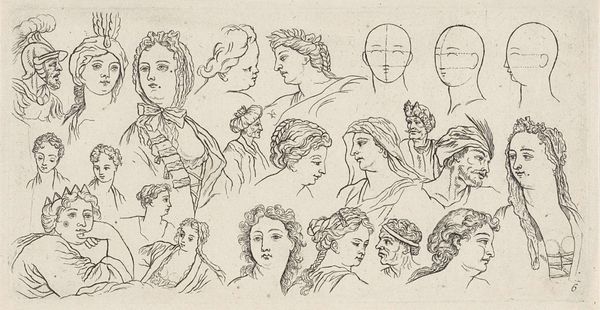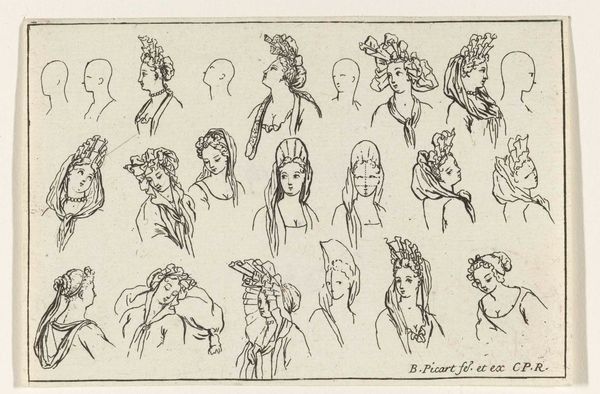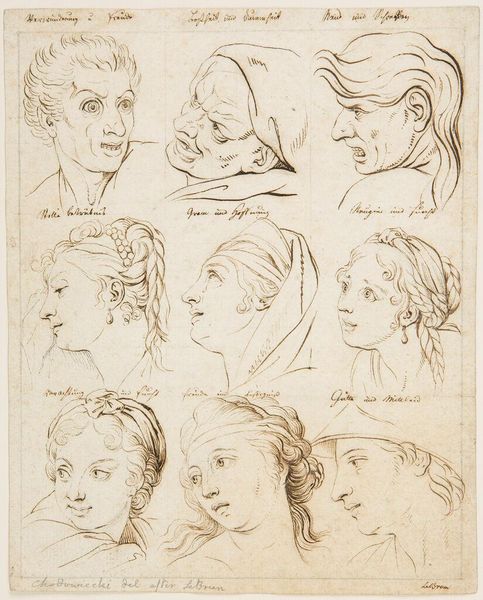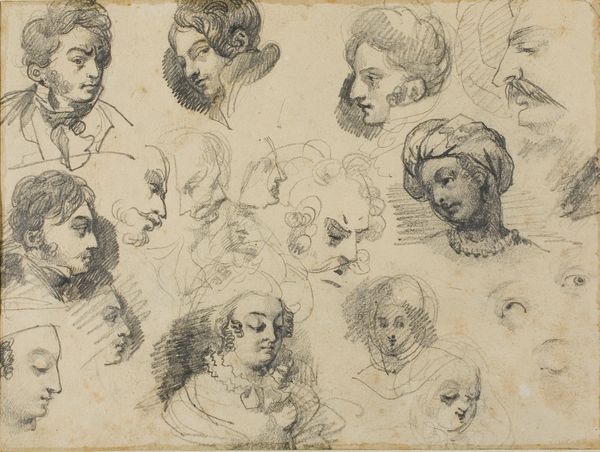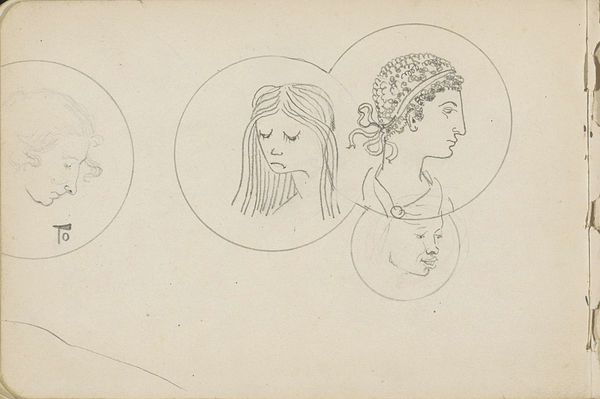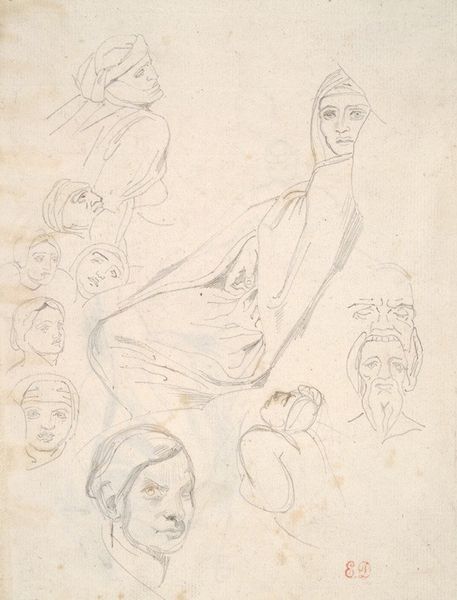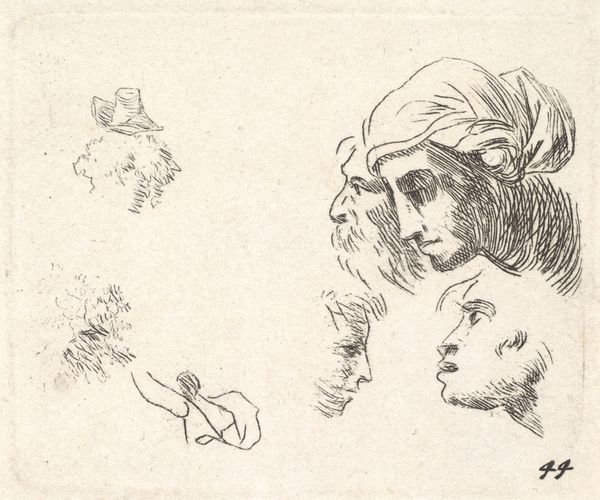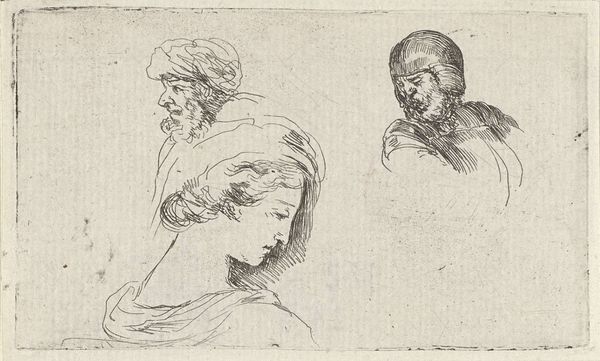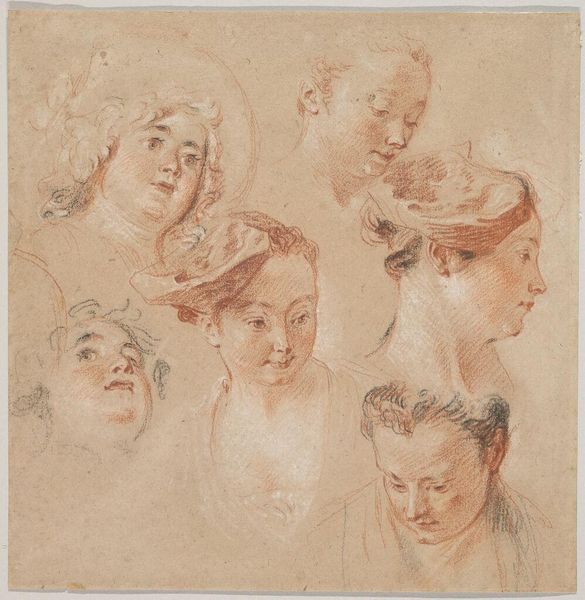
drawing, paper, ink
#
portrait
#
drawing
#
baroque
#
pen sketch
#
paper
#
ink
#
ink drawing experimentation
#
pen work
#
academic-art
Dimensions: height 96 mm, width 190 mm
Copyright: Rijks Museum: Open Domain
Curator: This drawing at the Rijksmuseum, attributed to Leonard Schenk and created sometime between 1710 and 1767, is entitled "Studies van verschillende menselijke hoofden"—studies of different human heads. It is rendered in ink on paper. What are your initial impressions? Editor: There's a dreamlike quality. A kind of surreal collage of faces, almost like archetypes plucked from various historical periods and social strata all coexisting in one space. Curator: That is perceptive. Schenk seems less concerned with individuality than with exploring idealised or representative features and expressions, drawing on Baroque sensibilities but also the more rigid constraints of Academic art. Consider, for instance, how classical and religious motifs intertwine, angelic figures juxtaposed against more grounded, almost genre-like characters. Editor: Absolutely. And I find it telling that these 'studies' are primarily of the head, emphasizing intellect, status, and even, potentially, subjugation given the varied head coverings. The gazes are especially evocative. Some look downward, perhaps suggesting subservience or reflection, while others are averted. It certainly speaks to power dynamics in 18th-century Dutch society. The sketch reminds of taxonomies. Curator: Indeed. And speaking of power, consider the persistent use of mythological symbols. Winged helmets and laurel wreaths communicate something very different from the turbaned figures or those wearing simple caps. The visual vocabulary subtly constructs hierarchies and allusions to virtues of authority, power, beauty, or faith. It presents a complex statement about the human condition and historical positionality in a relatively concise space. Editor: Agreed. Even within its limitations as an academic exercise, it offers space for challenging narratives around the construction of identity, and serves as an insightful historical reflection of the period. It reminds us art both perpetuates and questions accepted wisdom. Curator: Precisely. This study serves both as historical record and mirror. A glimpse into the prevailing ideologies of its era, and their lasting effect. Editor: It is thought-provoking to examine art practices when social identities weren’t freely expressed. It is amazing the art persists.
Comments
No comments
Be the first to comment and join the conversation on the ultimate creative platform.
